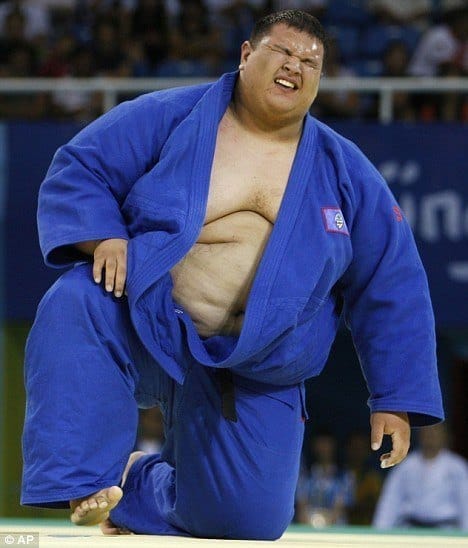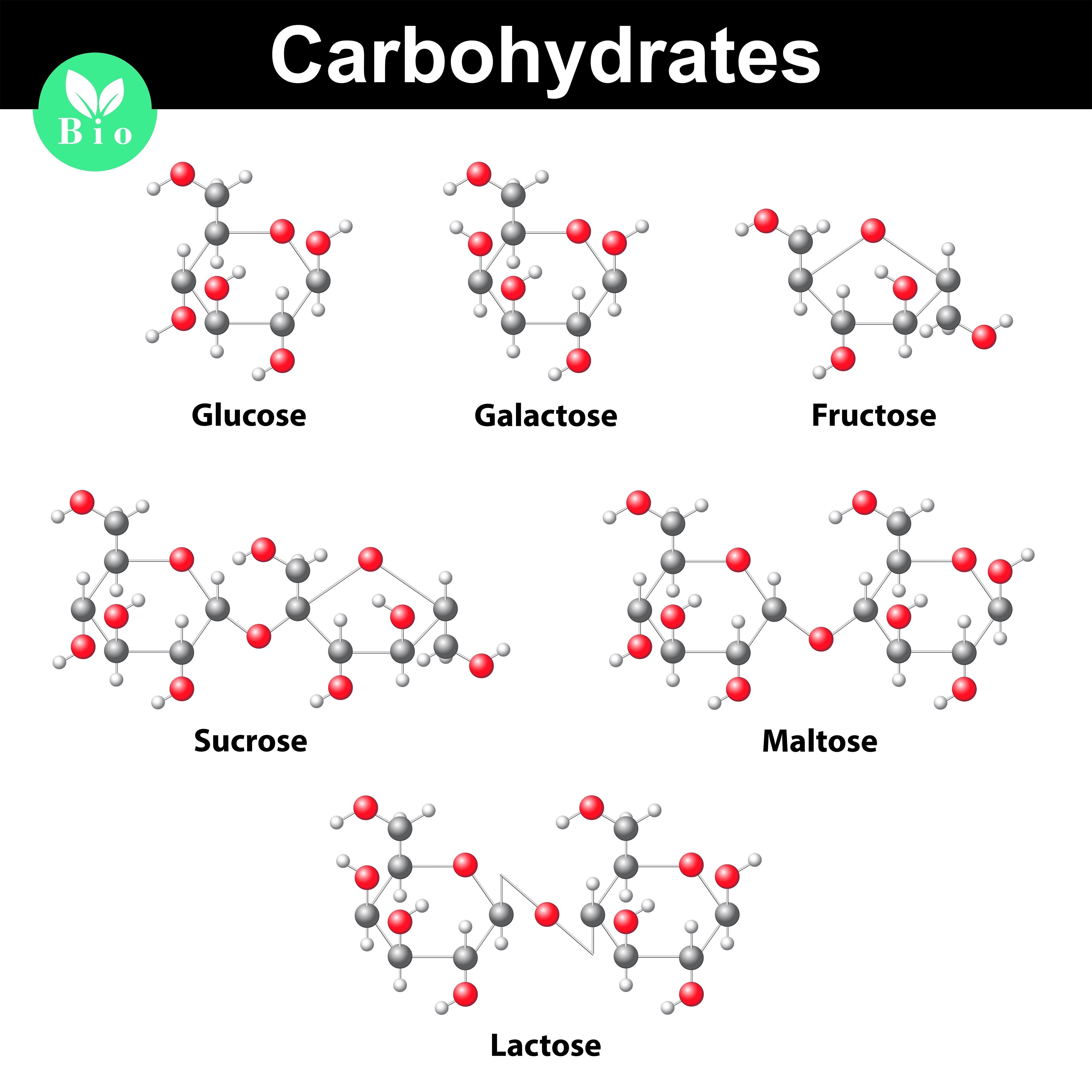We’ve all seen the happy Buddha-like Master teaching his class. He has several younger and fitter assistants showing off the techniques while the Master explains. Maybe the Master shows a technique.
When did this become normal and accepted?
In today’s world, it’s really easy to become fat and not so easy to become fit. Below, we’re sharing the reasons why people become overweight and many of the steps to shed excess pounds.
You should also read the article, "Key to Long Term Weight Loss" to get a comprehensive view on what to do to stay fit.
Why Do Martial Artists Become Overweight?
Fat Masters seems to be the norm in many martial arts. It’s such a problem in the art that Hollywood embraced the trend.
Martial artists across a number of social media sites like Reddit, E-Budo, Kenpo Talk and Martial Talk, acknowledge that it’s a common phenomenon to question why people in the martial arts are fat.
A variety of reasons cause weight gain, and it's never just one reason. Often, there are multiple ways people find they put on weight and the key is to discover which method is happening to you and which isn't.
Overeating
By far, people are overweight because they overeat. They consume too much food. But it's not just the amount of food; people are not eating the right amount of food for how their digestive system is working.
There are four primary reasons how we are eating wrong. They are as follows:
In general, too much food is consumed at any one sitting. Most people do not understand the concept of feeling hungry or being full. Many people think it is when their stomach starts rumbling, it’s the desire for food. But it is not actually about being hungry. It could be a desire for water, sugar, or food.
During a fast or detox, many people experience what it is to go entirely without food for several days at a time. This is some people's first experience with actual hunger. Every single person has described the feeling of real hunger as something entirely different than what they initially thought it was.
Many people in the US eat a large dinner. This is the wrong time of day to eat a large meal. By about 4 in the afternoon, our digestive system is already quieting down and preparing for sleep. The production of stomach acids and bile begins to decrease, and the peristalsis which moves food through our digestive system starts to slow down. When you put a significant amount of food on the stomach, all of those systems have to restart, but they don’t reset efficiently.
It gets worse the later you eat. During some of the martial art training I’ve been to, will train until 8PM and then go for a large meal. Unfortunately, this leads to fatigue, sour stomach, reflux, heavy feeling the next day, constipation, and weight gain. And forget trying to be efficient the next day. Since it takes a minimum of 18 hours for your food to get through your system, you’ll be feeling the late dinner clear through your next day’s training.
Eating the wrong type of food doesn’t provide the body with the proper nutrients it needs. We should be choosing foods that are high in vitamins, minerals, Protein, healthy fats, antioxidants, phytonutrients. We don't need foods that are high in sugar. But, most of the food that is easy to eat and quick to prepare contains a lot of sugar and very few nutrients.
Additionally, many of the foods grown in conventional farming and agriculture are depleted and healthy nutrients. This will include most of the pre-packaged foods. Eating foods that lack nutrition triggers our body to desire more food. The body's trying to make up the missing nutrients by increasing the quantity. As the amount increases, the body has a lot of extra sugars to deal with, and most of those good stored in adipose tissue.
And let's not forget about snacking. America is a snack food paradise. We have all sorts of foods design for quick and easy eating and a mentality that says it's okay to snack. In most cases, if you’re eating a healthy meal three times a day, you should not need to snack.
One of these snacks is prevalent in the competitive fighting world: Protein bar snacks. These packages of processed goop only look nutritious on the box. Our body has a difficult time breaking down the artificial fibers, the denatured proteins, and the synthetic vitamins. Plus, we eat with our eyes first, and the brown slab of mush is hardly as appealing as a crisp, red apple.
Wrestler Seth Rollins shows us a great example of eating well and maintaining a healthy body. He eats the whole egg, providing his body with lots of healthy fats, a complete set of vitamins, and high quality protein. He also avoids over supplementation and stimulation. Caffeine is a great booster, but if you rely on it, you could end up with health problems or the chance it will fail you when you need it. He also has come to rely on taking food with him because he realizes it’s so hard to find healthy food on the run.
We eat far too fast, as well. Each bite of food should be chewed 20 to 30 times each. This is enough time for the digestive enzymes in saliva to mix with food and for our teeth to grind food down into fine particles. Once the food gets swallowed, this gets the chance for the stomach to do what it does best, break the food down further and mix it with stomach acids. This is the best chance your body has a releasing the nutrients from the food for proper absorption.
Chewing service another function. The act of chewing helps release leptin from a brain which triggers our body to realize it’s full. It takes approximately 20 minutes from the body's first indication of the sensation of food to the time leptin is fully active in our system.
In both Buddhist and Taoist traditions, mindful eating is part of the overall training for martial artists. In the Shaolin monasteries, mealtime is as important and taken as seriously as fighting. As martial artists, we should emulate these traditions, rather than mindless eating.
Lack of Proper Exercise
Humans are unique among all animals. As we developed as a species, our main attribute was the ability to move over long periods of time and great distances continuously. We are known as Pursuit Predators. We are not fast, we are not agile, and we are not endowed with phenomenal weapons when compared to most species on the planet. What we are capable of doing is wearing down prey to the point they can't fight back.
Think about the last time you went on vacation. For many people, they sleep less, are more active, and walking or swimming for several hours more than what they usually do. It seems counter-intuitive unless you understand that our biology is designed to go those long periods of active time with little rest.
In Japan, there are certain sects of Buddhism that have walking meditation. Some monks walk for hours and some for days. There is a specific ritual where a monk will walk for 100 to 200 days straight.
So What Does That Have To Do With Losing Weight?
It’s recommended that people get 30 minutes of exercise at least three times a week. At a bare minimum, this is adequate to keep away the majority of health problems for people eating a healthy diet and being active otherwise. If you have a sedentary job, such as working with computers, this is not nearly enough.
Humans, especially men, are designed to walk and be active 8 to 10 hours a day. Women are considered to be more active, being on the go 12 to 14 hours per day. The most significant difference is men are designed to do heavy work, while women do regular light jobs. This comes down to basic physiology, which every martial artist should study.
If you don’t know how the body is supposed to work properly, how can expect to take it apart when necessary? For example, do you know why hitting the nose is worthless in a fight?
Exercise should reflect our capabilities. Aside from your martial art class, it's recommended you get 30 to 45 minutes of moderate exercise every day of the week.
Moderate is also defined differently for different people. Many people are familiar with endomorph, ectomorph, and mesomorph body types. This also relates to the three doshas of Ayurveda medicine and can be correlated to the In-Yo or Yin Yang principles of Japanese or Chinese medicine.
Somatotype Breakdown Is the Standard in the U.S.
Endomorphs have a high metabolic rate and build up on muscle fast. This body type does week with sprints and bursts of energy. However, they are also the fastest to gain excess weight throughout their body. Bodybuilders who put on muscle fast tend to be this body type. They need consistent exercises to maintain weight and fitness levels.
Mesomorphs are exemplified in endurance fighters, boxers and wrestlers. These people have a moderate metabolism and find it easy to gain muscle. They need a balance of heavy weight training day, cardio days and easier stretching days to maintain health. They can maintain weight and muscle for a few weeks without training or a proper diet, but then a decline will happen noticeably.
Ectomorphs seem to have it the easiest as they can maintain a slender figure without trying. They benefit the best from lighter exercises. Martial arts like Kung Fu and Capoeira lend themselves to ectomorphic body types.
Some people are more predisposed do heavier, or aerobic exercises and others are predisposed to softer strength-building exercises. But, that doesn’t mean that you have to be stuck with certain types of martial arts because of your body type. Anyone can do well in any martial art with proper training.
The best way to tell the difference in your body type is to see how you feel after the different types of exercise. Judge yourself after an aerobics class. Do you feel energized or drained? Did the same thing happen after a yoga class? People who are excited by an aerobics class and exhausted by yoga class need higher intensity exercises to maintain weight and be healthy.
If you fall in between where you were neither energized nor drained, you require a mix of activities. Regardless of your body type, you should get in some periods of aerobic exercise, some periods of weight training, and some periods of stretching exercises.
Martial Arts Weight Loss And Medications
Many medications have a side effect of weight gain. Medications are designed to force the body to do something that it naturally would not do. This can be producing a neurotransmitter in the brain that is missing to alleviate depression, supplying insulin that is not created by the pancreas, or forcing the heart to beat softer to make blood pressure numbers look better.
You should always look at any medication you take and find the method of action that it is enforcing on your body (remember that physiology study, it’s important here, too). Taking the example of blood pressure medication from above, lowering the intensity of the beat of the heart makes your blood pressure numbers look good.
But, does it relieve the problem of high blood pressure? The answer is most likely no. The reason you have high blood pressure is still there. Your body will still desire to beat your heart harder and faster to overcome the limitations of the problem and the medication.
Detrimental in Certain Situations
Are you an MMA competition fighter that needs your heart to beat faster to get more blood to your extremities?
Or how about a self-defense situation. It would be simple to pass out because your brain does not have enough blood or oxygen to accommodate the rush of endorphins from a frightening situation.
And this can be detrimental and some situations. Are you an MMA competition fighter that needs your heart to beat faster to get more blood to your extremities? Or how about a self-defense situation. It would be simple to pass out because your brain does not have enough blood or oxygen to accommodate the rush of endorphins from a frightening situation.
Some medications merely increase the appetite. They throw off the hormones ghrelin and leptin. By themselves, an imbalance of these hormones is not much of a problem. However, these hormones also dictate how insulin affects the body and insulin affects serotonin and testosterone production. Disrupting your hunger hormones could lead to depression and lowered sexual drive.
UFC Champion Georges St-Pierre changed his diet and exercise habits based on consulting he received from a nutritionist specializing in sports somatotype. He was able to get back in shape, add 12 lbs of muscle and went on to win even more fights. He worked with his body, rather than forcing into submission.
Environmental Influences
Some outside influences affect our ability to gain and lose weight. Although they come from outside of us, some are dictated by our choices. The prime example of this is the chemicals and preservatives in food. Many of these chemicals are endocrine disruptors, and endocrine disruption encourages weight gain. Many of the chemicals used in food, artificial colors and preservatives are also known to cause cancer, heart problems, and disrupt the neurotransmitters in our brain.
These chemicals are very similar to the toxins found in the environment. Things like lead, cadmium, and arsenic are industrial by-products that pollute our air and water.
Just like the chemical preservatives, these need to be detoxified from our body and removed.If the body has to detox many chemicals and toxins, it can overload the body and be treated differently. The body wraps toxins in a series of triglycerides and stores the triglyceride and toxin in the adipose tissue.
When the body tries to shed weight, this toxin can either be released back into the body causing more problems, or the body refuses to release that triglyceride. This can make losing weight very difficult.
Where we live affects our weight. City versus country living makes a huge difference. Mostly, the difference is dictated by how far you have to travel to do anything. In the cities with good transportation systems, many people do not own vehicles. They walk or use the public transportation. This allows many of these people to get more exercise and be more active.
In smaller towns and the suburbs, people require a vehicle to do the most basic of tasks. The simple act of getting food requires you to get in your car. This reduces the amount of exercise and walking people do.
Genetic Influences
Your genetics has a small role to play in gaining weight. A few genetic conditions predispose people to gain weight. In most of these, the actual act of gaining weight is determined by exercise levels, food intake, and medications. These are the same issues everyone faces, the condition only makes it easier.
Only a few rare genetic disorders that cause uncontrolled weight gain. Chances are, if you are participating in the martial arts, you do not have one of these genetic conditions. Most of them are severely debilitating.
Your family plays a more prominent part in your ability to gain and lose weight than genetics. Studies show that the way your parents cooked for you as a child will dictate your food preferences, taste preferences, and the ability to cook in the future. Only people who actively choose to change these habits break the tradition.
Ethnicity a Key Determinant
Ethnicity plays a large part in the family dynamics as well. Certain cultures favor certain foods. For example, people of Asian descent tend to use rice in many of their meals. People of Hispanic descent tend to use beans and legumes in their meals. By themselves, these are not bad foods, but if they contribute too much to your diet, they can cause problems.
One of the epidemics in Asia is diabetes. Rice is a staple food and present in nearly all meals. Prior to the industrial age, the higher carbohydrates were needed to offset the amount of work people did. Today, few people work as hard. The incidence of diabetes is skyrocketing.
The foods Buddhist monks are eating is affecting their health. In various monasteries, including ones that have a strong martial tradition, sweets, rice, and grains are more common. Prior to industrialization, their diet focused on fruits, vegetables, and sparse meats.
And it’s not just modern people that suffer from complications of a more accessible diet. Daruma Eyes, the sixth century founder of Zen Buddhism and Kung Fu shows signs of Graves' Ophthalmopathy, a complication of diabetes and too much food in general.
Locus of Control a.k.a "The Blame Game"
You also have to decide what is in your control. It's easy to say that you have complete control over your diet, but other factors come to play. For some people, time is a big issue.
There's not enough time between work and family to cook full healthy meals every day. This may be adjusted with specific techniques, but unless significant lifestyle changes are made, time will be a limiting factor. Do you grab something quick and easy between work and training?
Your children and significant other play a role in your food choices. If they decide not to eat the same way or are fussy, it's difficult to make completely different meals for them and you. It may also cause family strife if you force them to eat meals they don't enjoy.
Healthy food is also perceived as expensive. Although specific studies have proven that healthy food is just as costly as processed foods, the process of getting healthy foods can be more costly and time-consuming.
It is much easier to go to the grocery store then it is to visit various farmers markets and small shops.
Other Causes of Weight Gain
There may be other limiting factors for your ability to gain or lose weight. Not having enough information is no longer an excuse. There is enough free information on the internet to provide complete meal plans and diet information for people looking to lose weight.
Failure to plan is another big issue and weight loss. As you begin your weight loss journey, you have to discover what you want to eat, how you want to eat and join desire to action. Planning is critical. Diets that fail are ones that have no plan.
The perfect example of failure to plan is self-defense. If you walk around big and tough, you invite competition. If you dig your nose into your phone as you walk down the side-walk, you are devoid of potential threats and likely to be blinded by an attack. The first rule of self-defense is to be aware enough to not get into a situation where you need to use your training.
Nutritionists are available in hospitals and doctors’ offices to help create a plan for you to follow. Many health coaches are available to help keep you on track. Seeking out one of these professionals may help keep you on goal for your weight loss.
How The Body Eliminates Fat
Excess weight is eliminated through the combination of reduced intake and increased output. But, it is so much more complicated than that. On the most basic level, what goes in has to be less than what comes out. The simple explanation of calories in calories out does not even begin to cover the complexity of how to lose weight.
What The Body Does With Fat Consumed
Fats cover the most highly diversified and numerous category of nutrients. There are hundreds of different types of fats, most of which we need to survive.
Our digestive system and metabolism are highly selective of what types of fats are used and absorbed. Take for example butter. Butter contains over 30 different types of fats used by the human body. They incorporate in different sections of our intestine under highly specific circumstances.
If the body doesn’t need a particular type of fat, it’s not absorbed. It will pass straight through the digestive system and be eliminated. If the body can convert one kind of fat to another, it will absorb it and use various metabolic processes to create the fat needed.
These fats get used in a tremendous amount of physical processes.
They create our hormones, half of our physical structure, neurotransmitters, energy production, and energy storage.
What we commonly call fat, as in excess weight, is swollen adipose tissues, individual cells that store triglycerides. Triglycerides are three glycerin molecules, which are long-chain fatty acids, connected by glycerol. The long-chain fatty acid is derived from excess sugars in the body, converted in the liver to an easily stored unit for later use.
Carbs - The Real Fat
So you may be wondering where all the excess comes from. And its carbohydrates, otherwise known as sugars. There are dozens of known sugars and complex carbs.
Sugars are readily absorbed by our body and are nearly all absorbed, no matter if we need it or we don’t. Sugars are nature's way of providing us with fast and accessible energy. As we developed as a species, sugars were few and far between. So, our bodies developed the ability to store sugars in a very convenient way for times when sugar and other food were not available. It prevented us from starving.
Before modern society developed, people ate an average of 60 to 100 grams of carbohydrates per day. In cultures where beans and rice were more popular, that number may be increased. People were also extraordinarily physical and continuously moved and worked every day.
Today, because of the prevalence of wheat, processed foods, and other modern food junk, people consume an average of 300 to 500 grams of carbohydrates per day. That's 3 to 8 times what a person should be eating. This increase in sugar combined with a decrease in physical activity means obesity.
Carb-loading became the athletic norm several decades ago. Today, we know it’s not healthy or beneficial.
Balanced eating of proteins and fats from rich sources of fruits, vegetables, and meats provide long-lasting energy without distending the stomach and throwing off your insulin levels.
Inside the body, every cell is equipped with a transport system to move the combination of the hormone insulin and sugar into the cell efficiently. When the cell has the amount of sugar it needs, that transport system is shut down, and no more sugars enter the cell.
Balance is Critical
It doesn't matter how much sugar is floating around in the body. The cells will not accept more than it can handle. Otherwise, it runs the risk of poisoning itself.
The body cannot allow the excess sugars to float around the body continuously. Excess sugars have been linked to various health problems including heart disease, Alzheimer's, cancer formation, any other problem linked to excess weight. Sugar is considered a direct cause of diabetic neuropathy and blindness.
What the body does is form these sugars into triglycerides. Triglycerides are very easy to store in adipose tissue and help to bind toxins. As the fatty cells increase in size, so does our waistline.











